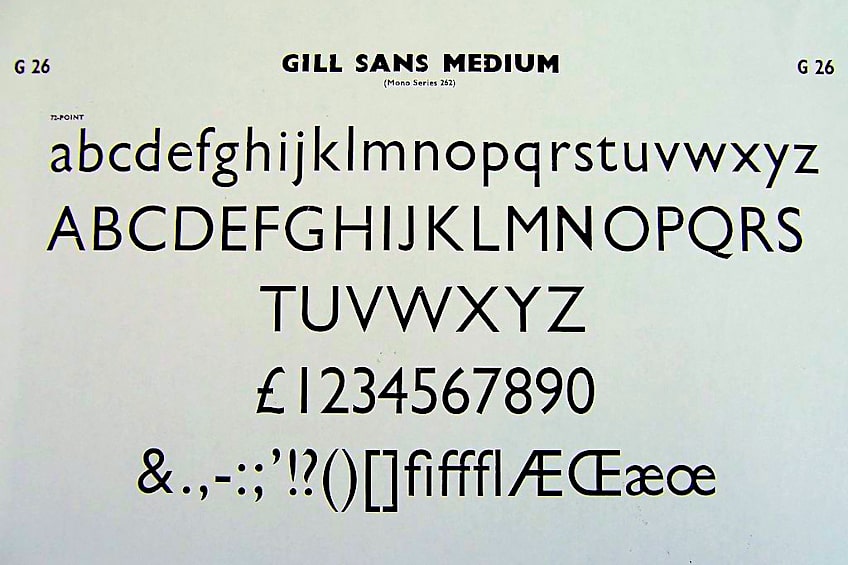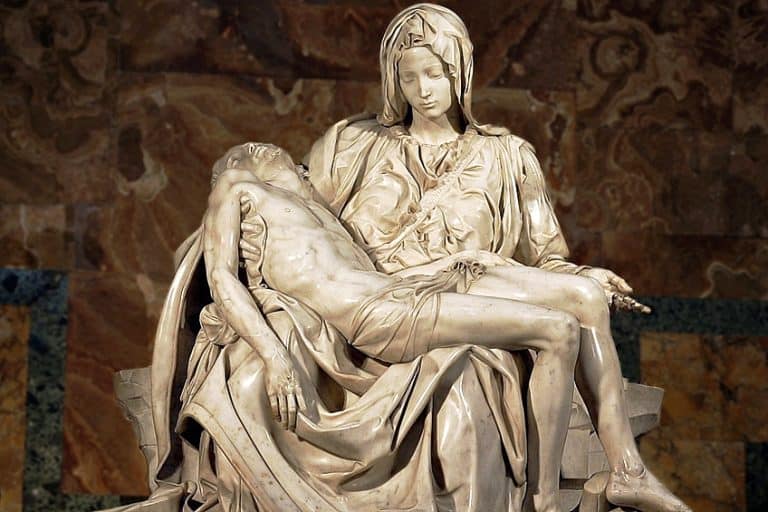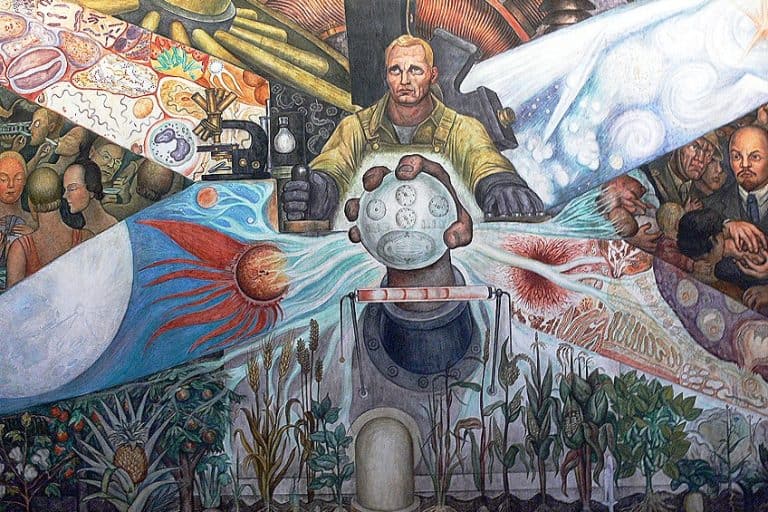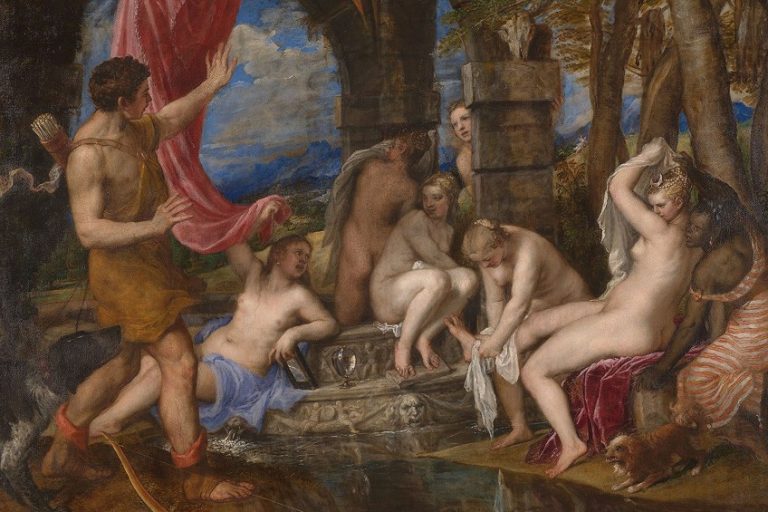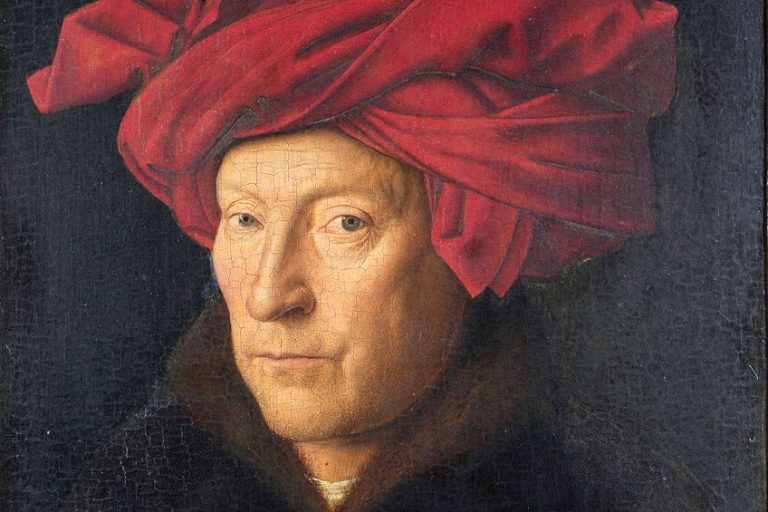Eric Gill – The Tainted Legacy of the Creator of Gill Sans Typeface
Who is Eric Gill? British sculptor Eric Gill was a renowned typographic designer, engraver, and author most known for his finely crafted typefaces and lettering, as well as the linear simplicity of his sculptures. Eric Gill’s art and literature were highly admired, but shocking revelations about incest within his family permanently tarred his reputation. Let us find out more about Eric Gill’s statues, writings, and controversies.
The Life and Art of Eric Gill
| Artist Name | Eric Rowton Gill |
| Nationality | British |
| Date of Birth | 22 February 1882 |
| Date of Death | 17 November 1940 |
| Place of Birth | Brighton, Sussex, England |
Sculptor Eric Gill was also known to be a very prolific author on social and religious issues, authoring over 300 written works, including pamphlets and books. With his aversion to industrialization, contemporary economics, and the use of machines in both the workplace and the home, he regularly caused controversy. In the years leading up to World War II, he supported pacifism and left-wing movements.
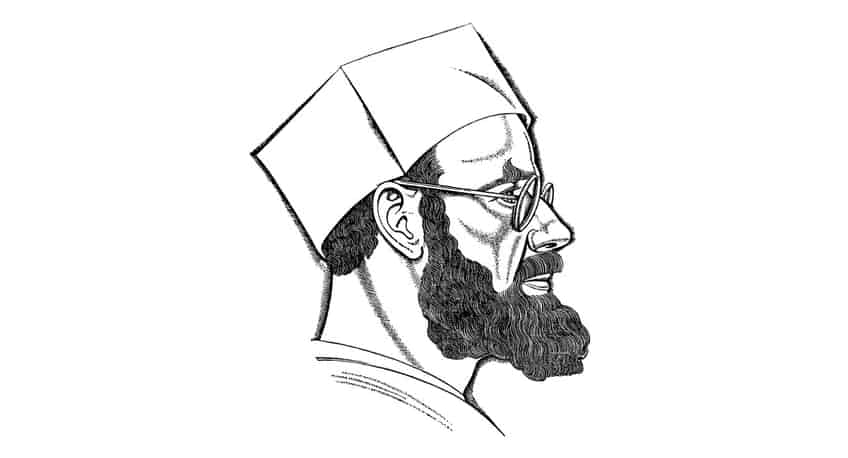
Eric Gill’s political and religious views, however, did not hinder him from engaging in inappropriate sexual relationships. His religious beliefs conflict with his aberrant behavior, which included the sexual abuse of his children as well as one of his sisters, as detailed in his personal journals.
Since the disclosures in 1989, there have been several demands for Eric Gill’s artworks to be removed from art collections and prohibit their display in public buildings.
Early Life (1882 – 1990)
Eric Gill was born in Brighton in 1882 to Arthur Tidman Gill, a reverend, and Rose le Roi, a former professional opera singer. One of his brothers became a renowned graphic artist in his own right, while the majority of his siblings became missionaries or nuns. In 1897, they moved to the city of Chichester, and Eric Gill entered the Chichester Technical and Art School.
While in Chichester, his love for lettering started to emerge and he also received the Queen’s Prize for perspective drawing.
Gill grew disillusioned with Chichester in 1900 and relocated to London to apprentice as an architect in religious architecture with a large company near Westminster Abbey for D. W. Caröe.
Early Training and Work (1900 – 1907)
Bored with his architectural education, Eric Gill continued to work at Caröe’s while taking evening sessions in stonemasonry and calligraphy. Edward Johnston, the designer of the London Underground font and a profound and everlasting influence on Eric Gill’s art, taught the calligraphy course.
Gill eventually abandoned his architectural studies in 1903 to become a letter-cutter, calligrapher, and monumental mason. He was commissioned to create stone memorial tablets for churches and tombstone inscriptions for cemeteries almost immediately.
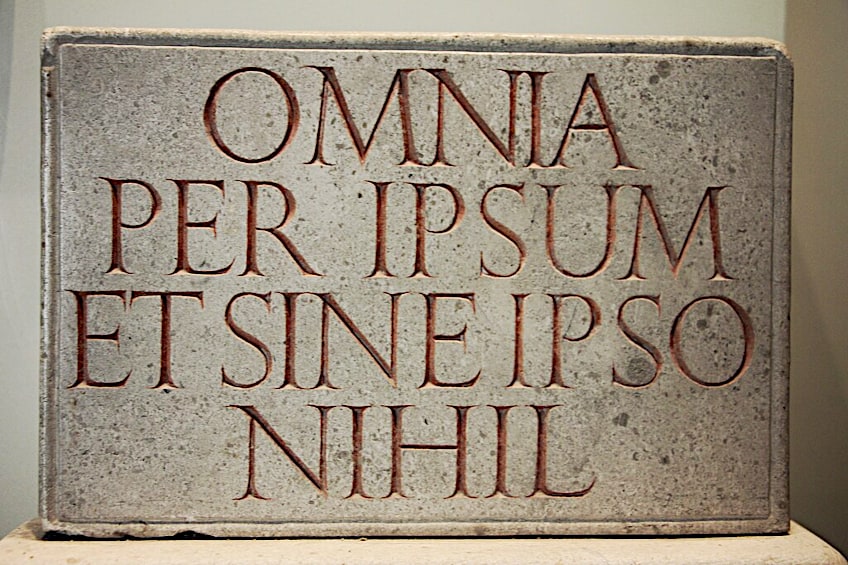
Initially, he managed to balance both jobs, but eventually, the volume and regularity of these commissions forced him to leave Caröe’s. Eric Gill married Ethel Hester Moore in 1904, and the couple had three daughters and fostered a boy. After a brief stay in Battersea, the couple relocated to Hammersmith in west London. There were already a lot of artists linked with the Arts and Crafts movement in the region, notably T. J. Cobden-Sanderson, Emery Walker, and May Morris, as well as a number of printing presses. Eric Gill went into business with Lawrence Christie and hired several employees to work in his studio. In 1905, he was appointed to the Arts and Crafts Exhibition Society, and the next year, he entered the Fabian Society.
Eric Gill eventually grew disenchanted with both the Arts & Crafts movement as well as the Fabians after a phase of serious engagement with both. By 1907, he was writing and giving speeches criticizing the craft movement’s shortcomings, both practical and conceptual, to oppose the growth of mass production.
The Ditchling Village Community and Early Sculptures (1907 – 1913)
Eric Gill and his family relocated to a home in the Sussex village of Ditchling in 1907, which would eventually become the center of an artists’ colony influenced by the artist. Even though he had built a studio in Ditchling and had severed his commercial partnership with Christie by April 1908, he still spent significant time in London meeting clientele and presenting lectures, while his wife organized their smallholding and home. He continued to focus on inscriptions and lettering and hired a trainee for his signwriting company.
Gill took up sculpture late in 1909, spurred by the thought of himself as a craftsman as opposed to an artist. He abandoned the traditional sculpture process of first creating a prototype and then scaling it up with a pointing machine in favor of carving the finished figure from the start.
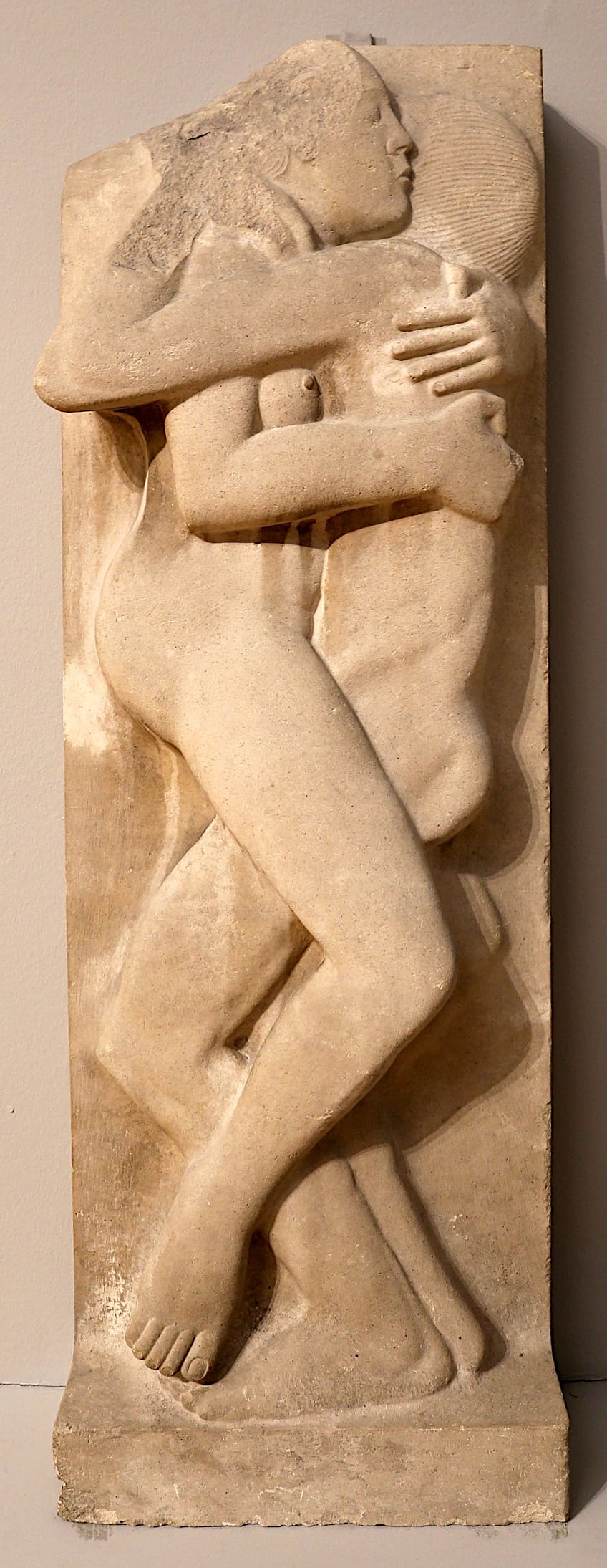
Eric Gill’s statues were initially described as “pathetic animalism” by art critics. In 1911, he produced an almost life-sized sculpture titled Ecstasy which was modeled by his sister Gladys, and her husband. It is believed that the incestuous affair between Eric Gill and his sister began around this time. While tombstone inscriptions were Gill’s major source of revenue by 1912, he had also sculpted a handful of Madonna statues and was often considered, incorrectly at the time, to be a Catholic sculptor. As a result, he was asked to attend a Catholic art exhibition in Brussels and stopped for a few days in the Benedictine abbey of Mont-César Abbey.
His observations at the Abbey inspired him to become a Roman Catholic after witnessing monks praying.
Work at Westminster Cathedral (1914 – 1918)
After Gill and his wife converted to Roman Catholicism in 1913, they relocated to Hopkin’s Crank. He mostly produced for Catholic customers there, including his 1914 contract for the Westminster Cathedral. Gill’s nomination for the work was surprising given that he had only just become a Catholic and had only been sculpting for around three years. Nevertheless, he was willing to work faster and for a smaller rate than more experienced sculptors.
Gill based the soldier and the figure of Christ in the panels on himself. When they were completed, Eric Gill’s artwork was not generally well received, with criticisms of their simplified style and how sharply they clashed with the overall design of the church interior.
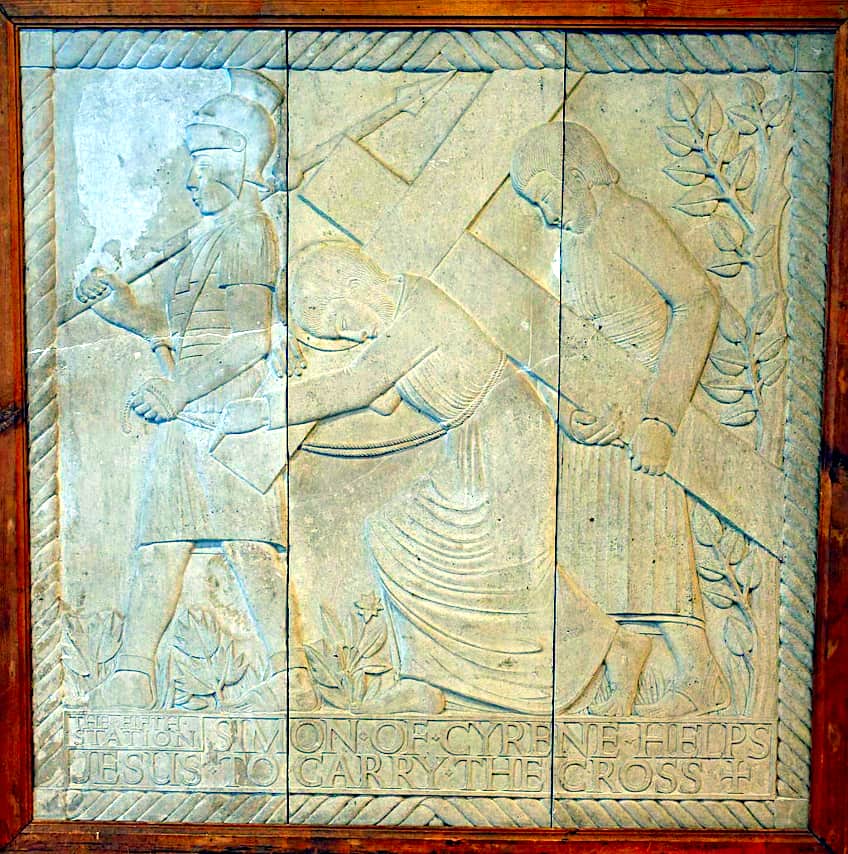
A small minority, like Nikolaus Pevsner, commended their minimalist design and unemotional approach to the subject. They are today regarded as some of his most accomplished artworks. Gill also produced plans for decorations and artwork in various other sections of the cathedral.
Guild Work (1918 – 1924)
Following World War I, Gill co-founded the Guild of St Joseph and St Dominic with Desmond Chute and Hilary Pepler to promote the values of medieval, or pre-industrial, artisan manufacture. The Guild’s focus was on human labor rather than more contemporary industrial methods, therefore they did not employ mechanized tools and saw craft work as a kind of religious devotion. A chapel of Gill’s design was erected in the heart of the Guild’s workshops, and on a nearby hill, a wooden cross with a Christ figure carved by Gill was erected. Gill had also begun to wear a habit, frequently with a symbolic rope of chastity attached.
Gill had begun to wear a habit, frequently with a symbolic rope of chastity attached. He also decreed that his family’s home would be devoid of modern appliances, with no lavatory, water obtained by a pump, and food cooked over a log fire.

One visitor was reprimanded for bringing a typewriter into the premises and the children did not go to school. Pepler established the St Dominic’s Press alongside the Guild, using a 100-year-old Stanhope press he purchased. The Press published booklets and pamphlets advocating the Guilds’ traditional craft practices, as well as providing a platform for Eric Gill’s artworks. Gill and Pepler collaborated on the publication of a small periodical, primarily illustrated by Gill and featuring essays on craftwork and social themes.
The two writers and their other publications’ viewpoints were frequently purposefully offensive, anti-capitalist, and anti-industrialization.
During this time, in addition to his Guild work and drawings, Gill produced many war memorials. A lot of professional artisans joined the community, and by the early 1920s, there were more than 40 individuals living in the 20 acres around the Guild’s church and studios. Nevertheless, Gill felt dissatisfied with the Guild’s approach and had a falling out with his good friend Pepler, partly due to the latter’s desire to extend the community and create closer relations with Ditchling village. Gill resigned from the Guild in July 1924 and relocated his family to a derelict abbey in Wales’ Black Mountains after exploring many other locations in Ireland and the United Kingdom.
The Capel-y-ffin Years (1924 – 1928)
The Gills left Ditchling in 1924 and went to a defunct monastery in Wales called Capel-y-ffin with two other families. The decaying structure was located high in a remote valley 14 miles from the nearest hamlet. When the monastery chapel was discovered to be beyond repair, a new one was soon constructed. Many of Eric Gill’s statues were produced around this period such as The Sleeping Christ (1924) and Tobias and Sara (1926). When asked by Robert Gibbings in 1924 to create designs for the Golden Cockerel Press, Gill first declined to work with the pair because they were not Catholics. When they offered to publish a collection of poetry by his sister Enid, Gill decided to reconsider. Gill’s friendship with the Gibbingses blossomed to the point that he became the Golden Cockerel Press’s primary illustrator and engraver over the next 10 years.

Another important working relationship Gill made while at Capel-y-ffin was with Stanley Morison, the Monotype Corporation’s Typographic Advisor. Morison encouraged Gill to use his letter-cutting abilities and understanding of typefaces appropriate for mechanical reproduction. Gill created the Gill Sans font while at Capel. Gill Sans is regarded as one of the most popular typefaces ever created and is still widely used today.
Gill spent several weekends at the Gibbings’ home while living in Capel-y-ffin, embracing the couple’s unusual and decadent lifestyle. He was also spending a significant amount of time in Bristol with a group of younger intellectuals led by Douglas Cleverdon, a bookseller who distributed some of Gill’s work.
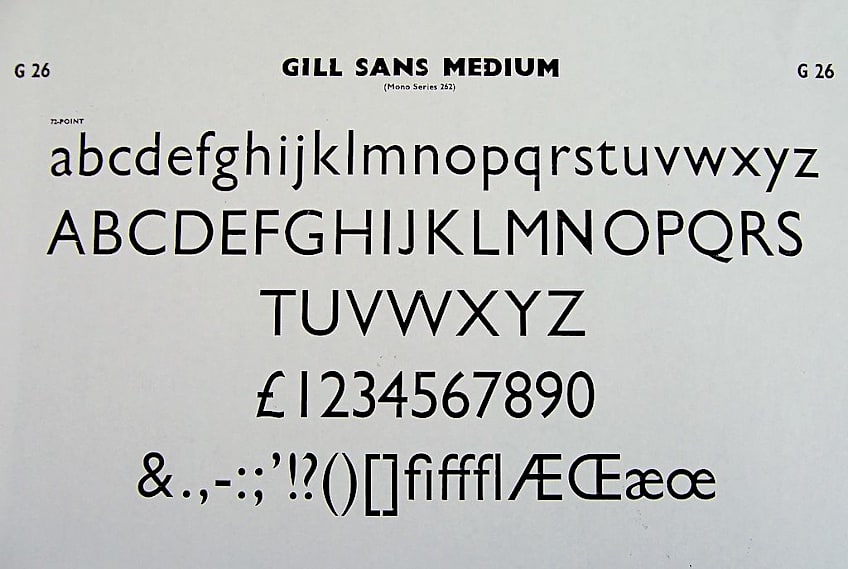
The Pigotts Years (1928 – 1934)
The Gill family relocated to Pigotts in 1928, five miles from High Wycombe. Barns and stables were turned into workshops and studios, as well as locations for printing presses. Within half a year, a chapel was built in one corner and authorized for Mass. The success of his 1928 show at the Goupil Gallery increased Gill’s reputation significantly, and Charles Holden commissioned him to supervise a group of five sculptors in designing some of the outdoor artworks for the London Electric Railway’s new headquarters building. Gladys Gill had divorced her second husband by 1930, and her incestuous connection with her brother appears to have restarted based on his journal entries.
In September 1930, he became seriously ill with a range of symptoms, such as amnesia, and was hospitalized for many weeks. The next two years were among the most artistically productive in Gill’s career, with numerous remarkable accomplishments. The Hague and Gill press was founded in Pigotts in 1931 and later printed 16 of Gill’s own books and pamphlets.

Gill worked on Prospero and Ariel, as well as four other pieces for the BBC building in central London during 1931 and into 1932. Carving in the open air on scaffolding in the center of London raised Gill’s public visibility even more. Although Gill acknowledged the BBC’s subject matter when he agreed to the commission, he did not understand its significance and commonly stated that the figures he produced portrayed God and His Son, the latter replete with the stigmata.
Work in Jerusalem (1934 – 1938)
Gill and Cribb traveled to Jerusalem in 1934 to assist at the Palestine Archaeological Museum. They created a stone bas-relief portraying the junction of Africa and Asia above the front door, as well as 10 stone reliefs depicting various cultures and a gargoyle fountain in the internal courtyard. He also sculpted stone signs in Hebrew, English, and Arabic around the museum.
Gill’s two trips to Jerusalem had a major effect on his mental state. He became more dissatisfied with humanity’s impact on the earth, as well as persuaded of his own position as one appointed by God to reshape society.
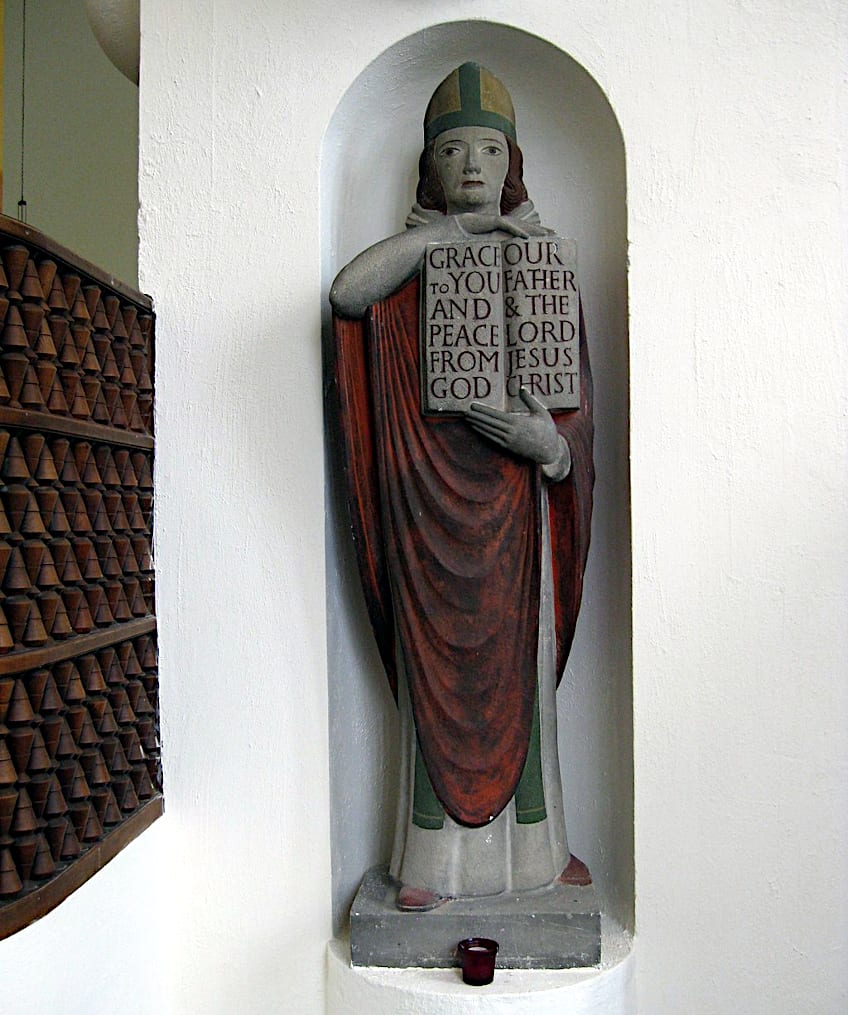
When he returned to England, his pessimistic attitude was exacerbated by the death of his son-in-law, and he grew increasingly hostile to other artists and the church. Along with this pessimistic worldview, Gill abandoned his long-held resistance to the use of contemporary home comforts and equipment. Pigotts obtained a bathroom, a driver and a gardener were hired, and his secretaries were permitted to use typewriters. Religious adherence was no longer demanded of the studio employees, and Gill hired a number of non-Catholics as extra trainees and helpers.
Final Years (1939 – 1940)
Gill designed his single complete work of architecture, the Roman Catholic Church of St Peter the Apostle between 1938 and 1939. He designed the structure around a centralized altar, which was regarded as a significant shift from the Catholic convention of placing the altar at the eastern end of a church at the time. Among Gill’s final works were several contracts for Guildford Cathedral. In 1939, he worked on scaffolding in Guildford, carving the statue of St. John the Baptist. He also started on a series of panels for the Anglican St Alban’s Church in Oxford, finalizing the sketches just three weeks before his death and producing nine of the pieces personally. He created a low-relief statue to adorn the wall behind the altar in Westminster Cathedral’s Chapel of Saint George.

Gill died before the work was finished, and the Cathedral authorities tasked Lawrence Cribb with completing it, insisting that he omit a component of Gill’s original design, a depiction of a pet monkey. When the chapel was ultimately presented to the public, the censoring of Gills’ final work caused quite a stir.
Gill suffered from a succession of ailments, including rubella, from the end of 1939 until the middle of 1940, yet he still was able to complete his autobiography that summertime. Gill passed away from lung cancer at Harefield Hospital on the morning of the 17th of November, 1940, and was interred in Speen’s Baptist graveyard following a funeral service at the Pigotts chapel. Following his death, an archive of more than 750 of his inscriptions was established, in addition to over 100 reliefs and stone sculptures, around 1000 engravings, many typeface designs he produced, and his 300 published works, which included books, essays, and pamphlets.
Posthumous Controversies
Gill’s personal journals expose the sexual misconduct of his two eldest adolescent children at Ditchling Common, as well as incestuous ties with his siblings. This facet of Gill’s life was rarely recognized outside of his friends and family until the 1989 release of Fiona MacCarthy’s biography. None of this was addressed in Robert Speaight’s 1966 biography.
Petra Tegetmeier, Eric Gill’s daughter who was still alive at the time of the biography’s release, characterized her father as having a never-ending interest in sex and that they simply took it for granted, and were not embarrassed about what happened to them.

The children were schooled at home, and Tegetmeier claims she was oblivious to how her family’s behavior seemed to outsiders. Despite the book’s critical praise and universal outrage at parts of Gill’s sexual life upon its release, MacCarthy was chastised for disclosing Gill’s incest during his daughter’s lifetime. Others, such as Bernard Levin, believed she had been too kind to the artist.
Despite MacCarthy’s discoveries, Gill’s reputation as an artist grew for several years, but after the uncovering of other high-profile pedophiles, this altered, with organizations and people demanding the removal of Eric Gill’s statues from public places.
Eric Gill’s Artworks
The attention to detail, workmanship, and incorporation of traditional materials and processes distinguish Eric Gill’s artworks. Eric Gill’s art was particularly noted for its use of symbolic and figurative imagery, and it frequently had a significant moral or spiritual message underlying the images.
Gill was also an outspoken supporter of traditional workmanship and the application of hand-crafted methods in the arts.
Some of the most well-known of Eric Gill’s artworks are his Stations of the Cross (1919) sculptures for Westminster Cathedral in London and the creation of the font Gill Sans.
| Artwork | Date | Medium | Dimensions (cm) | Location |
| Ecstasy | 1911 | Hopton Wood stone | 137 x 45 x 22 | Tate Museum, London, United Kingdom |
| Ascension | 1918 | Wood engraving on paper | 15 x 8 | Tate Museum, London, United Kingdom |
| Self-Portrait | 1927 | Wood engraving on paper | 18 x 12 | Tate Museum, London, United Kingdom |
| Eve | 1929 | Wood engraving on sycamore | 11 x 23 | Victoria and Albert Museum, South Kensington, United Kingdom |
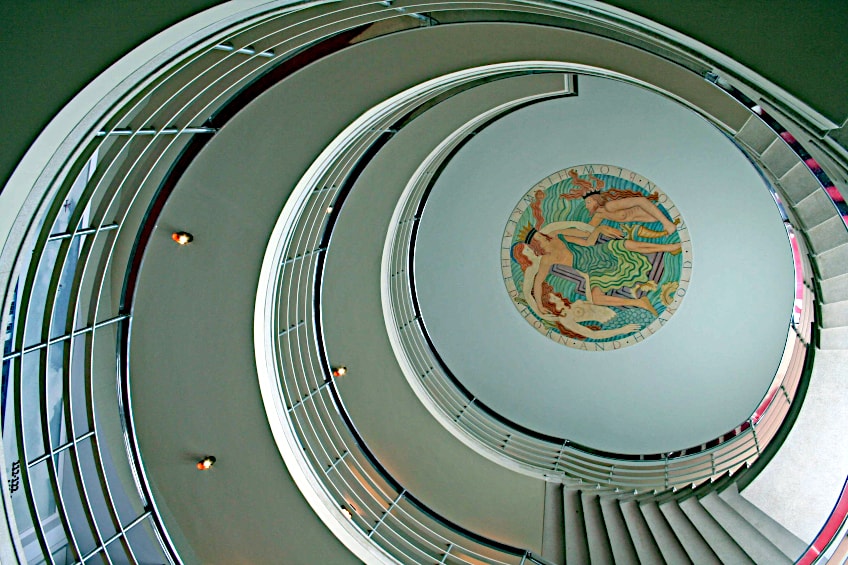
Artist and designer Eric Gill was a prominent proponent for the revival of traditional craftsmanship, and he was greatly acclaimed and loved by many. However, despite his creative accomplishments, Gill’s personal life was marred by scandal, including claims of child molestation and incest. This contrasts with the public image he had always maintained of being a religious and God-fearing Christian. While once admired by many, since the revelations of his abuse, numerous people have called for the removal of his art from public collections and spaces.
Frequently Asked Questions
Who Is Eric Gill?
Eric Gill was regarded as a multi-talented artist who specialized in printmaking, sculpting, and typography, but was most recognized for his sculptures. Eric Gill was also a skilled printer, creating a variety of works such as woodcuts, lithographs, and engravings. Eric Gill was a typographer as well as an artist, and he created many typefaces, including the widely used and highly influential typeface, Gill Sans.
What Was the Controversy About Sculptor Eric Gill?
The sculptor Eric Gill was known to have a history of having sexual encounters with his siblings and daughters. This knowledge was not generally known during Gill’s lifetime, but it was eventually exposed in his journals after his death. The discovery of Gill’s abusive conduct has sparked significant controversy concerning whether it is appropriate to celebrate Gill’s creative accomplishments, and some have demanded that his artworks be withdrawn from public display. Some people continue to value Gill’s creative accomplishments and see him as a pivotal character in the Arts and Crafts movement, while others regard his work with contempt, owing to the controversies surrounding his personal life and allegations of sexual assault.
Isabella studied at the University of Cape Town in South Africa and graduated with a Bachelor of Arts majoring in English Literature & Language and Psychology. Throughout her undergraduate years, she took Art History as an additional subject and absolutely loved it. Building on from her art history knowledge that began in high school, art has always been a particular area of fascination for her. From learning about artworks previously unknown to her, or sharpening her existing understanding of specific works, the ability to continue learning within this interesting sphere excites her greatly.
Her focal points of interest in art history encompass profiling specific artists and art movements, as it is these areas where she is able to really dig deep into the rich narrative of the art world. Additionally, she particularly enjoys exploring the different artistic styles of the 20th century, as well as the important impact that female artists have had on the development of art history.
Learn more about Isabella Meyer and the Art in Context Team.
Cite this Article
Isabella, Meyer, “Eric Gill – The Tainted Legacy of the Creator of Gill Sans Typeface.” Art in Context. July 5, 2023. URL: https://artincontext.org/eric-gill/
Meyer, I. (2023, 5 July). Eric Gill – The Tainted Legacy of the Creator of Gill Sans Typeface. Art in Context. https://artincontext.org/eric-gill/
Meyer, Isabella. “Eric Gill – The Tainted Legacy of the Creator of Gill Sans Typeface.” Art in Context, July 5, 2023. https://artincontext.org/eric-gill/.


